Leg room, seat pitch & your 'personal space' on an aircraft explained
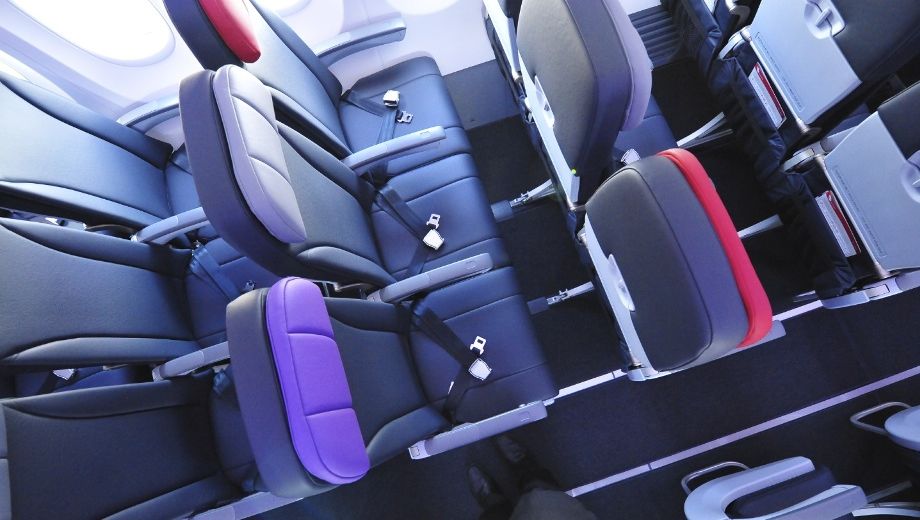
How much legroom will you find when you reach your airline seat? What's this aircraft "seat pitch" business all about? And how is it measured on board the plane?
If you're a newly minted frequent flyer, or just need a refresher on what pitch is and how it works, we've got you covered.
What is seat pitch?
Seat pitch is a technical term used by airlines, and refers to the distance between the back of your seat and the back of the seat in front.
Pitch includes not only your legs but the depth of the seatback structure and cushions, plus the tray table.
That exit row seat above has plenty of room, but if you're in a regular seat (have a peek at the row behind the exit row, for example) you'll have less space.
What's the regular seat pitch in economy?
In terms of numbers, regular economy class seat pitch can vary:
- 28 inches is the bare minimum, used on low cost carriers like Jetstar and AirAsia
- 31 inches is the minimum for long-haul flights on full-service airlines like Qantas and British Airways
- 34 inches is the most we've seen in regular economy, on Korean Air, Malaysia Airlines and a few others
That number is often used as a proxy for legroom -- but it's not really a direct equivalent since you need to take into account the depth of the seatback too.
Some airlines sell seats with more legroom than that for an extra fee. On smaller planes like Boeing 737 or Airbus A320 jets, these might be the front row, a bulkhead or an emergency exit row.
United Airlines also offers Economy Plus (a separate section of regular economy seats with more legroom in the economy cabin, heavily populated by frequent flyers), and Delta offers something similar in its Economy Comfort zone.
The seat itself is important too
A thicker seat -- especially in Economy, where there's less space to play with -- means that you get less legroom. You'll usually find these aboard older aircraft.
Compare the thicker, older seat from a late 1999 plane to the seat from the brand new plane above.
But it's not just the that newer seats are thinner.
Some airlines are starting to use specially-designed slimline seats which move the seatback pocket up to eye level, have a different support structure and shave inches off even newer regular style seats.
We tried slimline seats out recently in Germany, and were impressed -- although in fairness that's because Lufthansa decided to split the difference with passengers. The airline gets more seats on the plane, and passengers get a bit more legroom.
What about business and first class?
In domestic business class or premium economy -- where the seats are recliners rather than the type that turn flat -- it's a similar situation. Measure seatback to seatback and that's your pitch.
Within Australia, Virgin Australia has the biggest recliner pitch around, at just over 60" on its Coast-to-Coast Sydney-Perth A330 planes.
The calculations are a little different in the angled lie-flat seats and fully flat beds of long-haul international business and first classes. (Qantas occasionally runs this type of seat between Sydney and Perth on Boeing 747 and Airbus A330 planes too.)
Since your feet may tuck under the seat in front of you when the seat is in its sleeping position, you'll want to check out the bed length in addition to seat pitch:
As any geometry student could tell you, the length of the bed when sloped at an angle can be greater than the pitch of the seat horizontally.
Pitch is still important at the pointy end of the plane, though: the more space there is in front of you, the easier it is for window passengers to nip out over a sleeping aisle passenger.
All sorted? Any questions? Ask away in the comments section below or fire off a tweet to @AusBT.
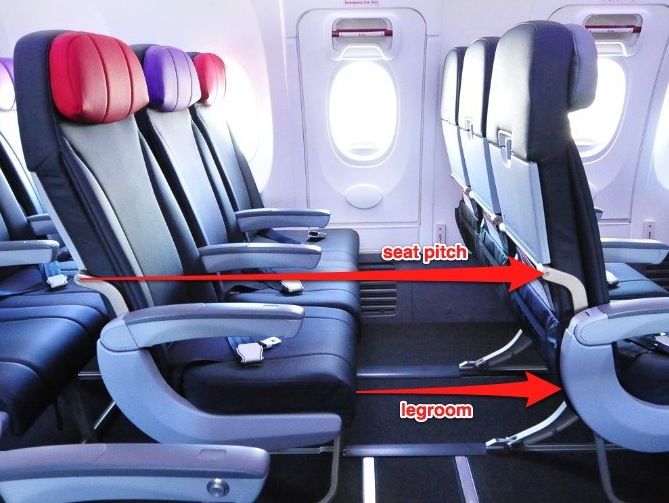
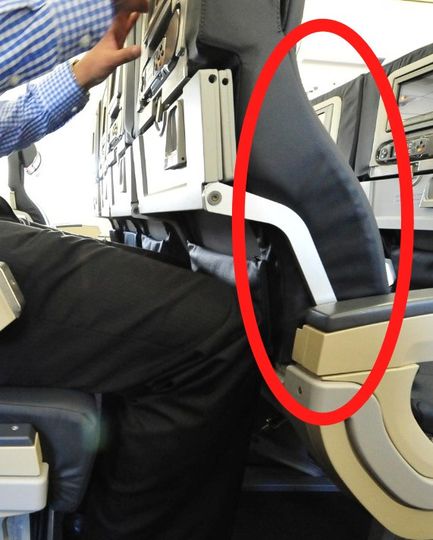
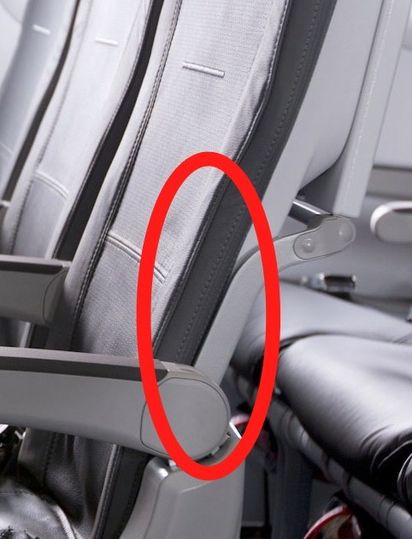
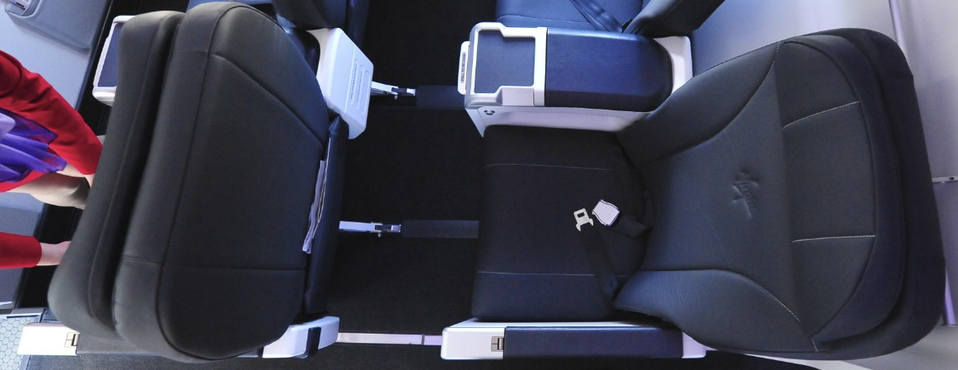
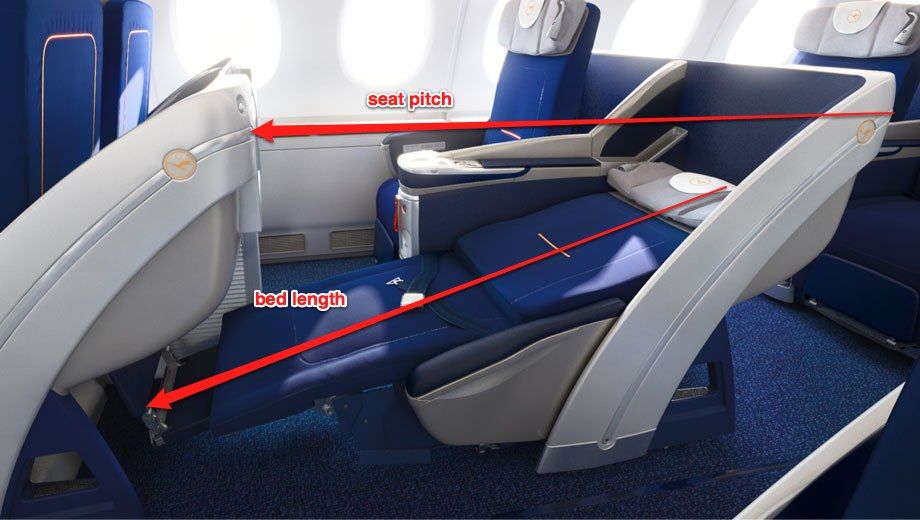
21 Apr 2012
Total posts 3006
Is it a quiet news day John?
03 Jan 2011
Total posts 665
Mate, you know we're not just a news site. We carefully craft our daily mix to make sure that there's a good variety of information for everyone.
This kind of explanatory article is core to our reader offer -- and it's also useful to refer back to whenever we (or others) talk about pitch.
QFF Gold QC gold
26 Nov 2012
Total posts 56
John I thouht it was a great article. Good to read about all facets of the airline industry. This is certainly one of the important ones.
I knew a bit about seat pitch but still managed to pickup a few things from your article I didn't know.
Qantas - Qantas Frequent Flyer
20 Mar 2012
Total posts 233
I think it's very useful, most people wouldn't know what any of those terms meant.
04 Nov 2010
Total posts 670
TheRealBabushka: lighten up dude. Not only is AusBT not just a 'news' site as John said, with lots of articles for general reference and information, but the guys were at Sydney Airport yesterday morning, Sunday, to cover the new QF A330 when most of us were in bed or having breakfast. I don't think you can then take a shot at them as if they're lazy!
John: great article, everybody wonders over this stuff when they start flying, great to see it explained in plain language and with good photos too.
Qantas - Qantas Frequent Flyer
10 May 2011
Total posts 732
I reckon TheRealBabuska as well as posters commenting on him are a bit harsh in their comments. Have to admit with TheRealBabuska that the seat picth article seems to be coming back / is reposted (with sometimes updates) quite a lot (together with the article on the difference between lie flat and fully flat seats in business). however, I guess if there is an audience who is not familiar with seatpitch (or business class seats for that matter) it is useful to pots it (again).
03 Jan 2011
Total posts 665
The frequency that we create, revise and update articles like this is all part of the thinking we put into the daily mix, KG.
Obviously, we try to spread that out at a reasonable pace so that our regular readers and expert flyers are getting their news fix, but equally there are many, many readers who aren't regular commenters or who are new to flying. I bet if you stopped five people on the street, maybe one of them might know something about seat pitch.
In terms of specifics, this article was last reissued seven months ago as an update -- fleshing things out and casting a fresh eye over our explanations. The previous update was in November 2011. Honest question: is twice yearly annoying for frequent readers?
I wouldn't want to speak for you, but is this one (and the one about lie flat vs fully flat) sticking in your mind because we link to it frequently when we talk about seats?
I'm pretty unapologetic about that, mind -- one of the really great things about AusBT being online is that we can hyperlink instead of having to explain seat pitch in every article.
(In fact, interesting aside: I first decided to write this article because I was fed up of saying "that's the space between your seatback and the back of the seat in front of you, not counting the tray table -- in other words, what you can call your personal space on a plane".)
AusBT is growing so fast and proving so popular that even people we think are regular commenters who've been around forever mightn't have seen articles like this when they were first written -- let alone new readers, people finding their way here by Google or being linked here by a friend or colleague.
Incidentally, for anyone who wants to note down a more memorable URL for this article for future reference you can get here via https://www.executivetraveller.com/pitch
Qantas - Qantas Frequent Flyer
10 May 2011
Total posts 732
Hi John, I am not critising AUSBt at all and I understand that there are a lot of new joiners to the forum / new readers to the blog. For me it is pretty simple, if I already know a topic I just skip it (or perhaps glance over it to see if there are any updates in the article).
Having said that (and maybe it is already part of the site refresh coming soon) it could be helpful to have a seperate directory on AUSBT which lists topics and has links to relevant post from the past. Esp on the seatpitch, lie flat / full flat, airline alliances, airline lounge topics (I am aware you kind of have his in the left hand menu when you click an article / on the bottom of the page) but I am talking more an "at a glance" or "Common airline lingo explained" section.
Keep it up, again, not critising you at all, just observing, giving feedback.
03 Jan 2011
Total posts 665
Hey, we're always up for constructive criticism and hearing what our readers think -- and really, thanks again for chipping in.
One of the things on my to-do list even before the site refresh is to work together these kind of informative, definitions-based articles into a hub page -- like our Best Seats hub, for example.
We're all about demystifying the often-murky world of airline lingo (Yes, that pax was nonrev SYDMEL in Y on a BSI 738!), so that's definitely on our list too.
Question for you and for other readers happening past: what else would you like demystified? What would you like to see next in "John Explains It All"?
21 Apr 2012
Total posts 3006
Constructive criticism is good...so is a spot of sardonic banter, I hope!
Wasn't expecting such a kerfuffle from my comment!
But, John what I'd really love to learn (and have analysed for me) is the application of EU regulations for airlines and its impact on carriers/pax within and without the EU. What are reach and limits of these regulations?
Hope you would consider this topic. Love what you do. Thank you!
Qantas - Qantas Frequent Flyer
25 Sep 2012
Total posts 21
Those Lufthansa business seats make me cringe... at least their food is half decent!
Hi Guest, join in the discussion on Leg room, seat pitch & your 'personal space' on an aircraft explained